This story appears here courtesy of TheChurchNews.com. It is not for use by other media.
By Trent Toone, Church News
The Genealogical Society of Utah was created on November 13, 1894, under the direction of Wilford Woodruff, the fourth president of The Church of Jesus Christ of Latter-day Saints.
The new organization was founded with three main goals — collecting, establishing and maintaining a genealogical library; disseminating genealogical information; and acquiring records to perform temple ordinances.
Today, on the eve of its 130th anniversary, the Genealogical Society of Utah is known as FamilySearch International, one of the world’s largest genealogical organizations, with more than 1.5 billion people in its collaborative online family tree and 18 billion searchable historical records and images. In addition to having the single largest genealogical library in the world in Salt Lake City, FamilySearch has also established over 6,000 FamilySearch centers (branches) worldwide.
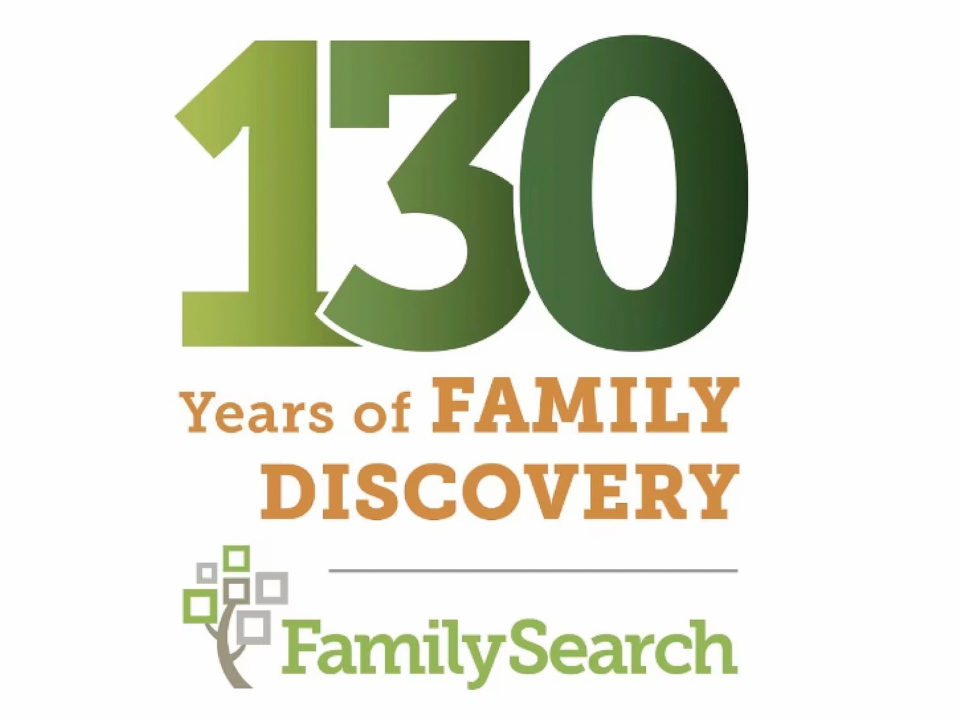
FamilySearch-130th
FamilySearch International is celebrating 130 years of uniting families through temple and and family history work on November 13, 2024. 2024 by Intellectual Reserve, Inc. All rights reserved.To witness how the organization has grown and maintained its original goals has been remarkable, said Elder Kevin S. Hamilton, a General Authority Seventy and executive director of the Church’s Family History Department.
“I think Wilford Woodruff would be absolutely stunned to see the reach, breadth and the work that has been done in the 130 years,” he said. “It is such an exciting thing to watch, and it came from such humble beginnings — just a few books in a room with a handful of volunteers.”
Speaking of the original goals, Elder Hamilton added, “Similar objectives, similar purposes, similar strategy, just much larger and of course completely global now.”
The Genealogical Society of Utah was established 18 months after the April 6, 1893, dedication of the Salt Lake Temple, said Steve Rockwood, CEO of FamilySearch.
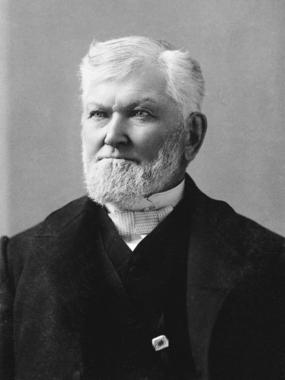
Wilford-Woodruff
The Genealogical Society of Utah was created on November 13, 1894, under the direction of Wilford Woodruff, the fourth president of The Church of Jesus Christ of Latter-day Saints. 2024 Intellectual Reserve, Inc. All rights reserved.“When we look back, we are stunned and amazed at how prophetic [President Woodruff] was in creating this,” Rockwood said. “The wisdom and the way he structured everything, we are still the beneficiaries of that 130 years later, and we are doing the exact same thing — still enabling the children of the covenant to discover their ancestors and perform temple ordinances.”
In the Salt Lake Temple’s dedicatory prayer, President Woodruff asked the Lord to send the spirit of Elijah and bless those not of the covenant.
“We have the wonderful blessing to serve many who are not members of the Church,” Rockwood said. “And so the prophetic nature of it is stunning.”
In a Church News interview, Elder Hamilton and Rockwood reflected on FamilySearch’s 130th anniversary, its growth, technological advances, inspiring experiences, and how temples shape the future of family history work.
‘Joined at the Crossroads’
In an April 1977 talk given at a regional representatives seminar, then-Elder Boyd K. Packer of the Quorum of the Twelve Apostles taught: “When the servants of the Lord determine to do as He commands, we move ahead. As we proceed, we are joined at the crossroads by those who have been prepared to help us.”
FamilySearch has been “joined at the crossroads” by a “tsunami” of data, resources and technology needed to accomplish the work, said Elder Hamilton, who cited the statement in a recent BYU-Hawaii devotional address.
“As the work has expanded and gotten bigger and bigger, if you think about some of the advances that have been brought to bear even in the last 10 years, it is really remarkable,” Elder Hamilton told the Church News. “We are doing things today that we could not have done in a previous generation.”
From travel to microfilm technology, computers and the Internet, “those crossroads are so inspiring,” Rockwood said.
When celebrating its 125th anniversary in 2019, FamilySearch outlined the following notable advancements in a timeline:
- 1922 — Paper indexing began.
- 1938 — Microfilming began.
- 1964 — The first family history center opened.
- 1984 — Personal Ancestral File software was released.
- 1999 — FamilySearch.org was launched.
- 2006 — Online indexing began.
- 2011 — The first RootsTech conference was held.
- 2013 — FamilySearch made its family tree available to all.
- 2014 — Mobile apps Family Tree and Memories were launched.
- 2018 — FamilySearch discovery experiences became available online.
Advancements in technology have not only facilitated greater participation, but they are a means for people to feel the Spirit of Elijah, a manifestation of the Holy Ghost, Rockwood said.
“There are more people now that can feel the Holy Ghost bearing witness of the divine nature of their family, whether they have any genealogical intention or aspiration at all,” he said. “Technology has now been a wonderful means for that restoration of the spirit of Elijah to be enjoyed by many, many more people.”
The Past Five Years
Some of FamilySearch’s most impressive achievements have come in just the past five years.
A worldwide pandemic allowed RootsTech, originally a three-day, in-person family history conference in Salt Lake City, to become a free, online event that reached millions worldwide, starting in 2021. The 2024 event drew nearly 5 million virtual attendees from 240 countries and territories, and participants made over 350 million family connections.

FamilySearch-130th
Zipporah Miles looks through a water feature at the RootsTech conference at the Salt Palace Convention Center in Salt Lake City on Saturday, February 6, 2016. Photo by Kristin Murphy, courtesy of Church News.Copyright 2024 Deseret News Publishing Company.“It truly has become a global event,” Elder Hamilton said. “We are now looking at how do we make this even bigger and more far reaching.”
In 2021, FamilySearch completed the monumental feat of digitizing its 2.4 million rolls of microfilm containing historical genealogical records from more than 200 countries and making them easily viewable online through a new image viewer. The free online collections provide patrons with easy access to information for more than 11 billion ancestors.
Most recently, FamilySearch began using Artificial Intelligence advancements to help index its billions of newly digitized, historical genealogical documents more quickly. An army of online volunteers now help refine the accuracy of the AI’s output and record indexes by using FamilySearch’s Get Involved tool.
“Generative AI has changed everything about how we approach big data,” Elder Hamilton said. “We are still in the early days where everybody is trying to figure this out, but the future is so bright.”
FamilySearch is also now available in more than 40 languages.

FamilySearch-130th
People walk through the expo room at RootsTech at the Salt Palace Convention Center in Salt Lake City on Thursday, February 29, 2024. Photo by Kristin Murphy, courtesy of Church News.Copyright 2024 Deseret News Publishing Company‘Temples Are Nourished With Names’
In a 2019 temple leadership seminar, President Russell M. Nelson taught: “Family history research and temple service are one work in this Church. We cannot do vicarious work for our progenitors unless we know who they are. Temples are nourished with names. Without genealogies, ordinances could be performed only for the living.”
With 367 houses of the Lord operating, announced or under construction worldwide, the main mission of FamilySearch is to “nourish temples with names,” acknowledged both Elder Hamilton and Rockwood, reciting President Nelson’s phrase as they expressed gratitude to the countless volunteers who contribute to the work of gathering and digitizing records.
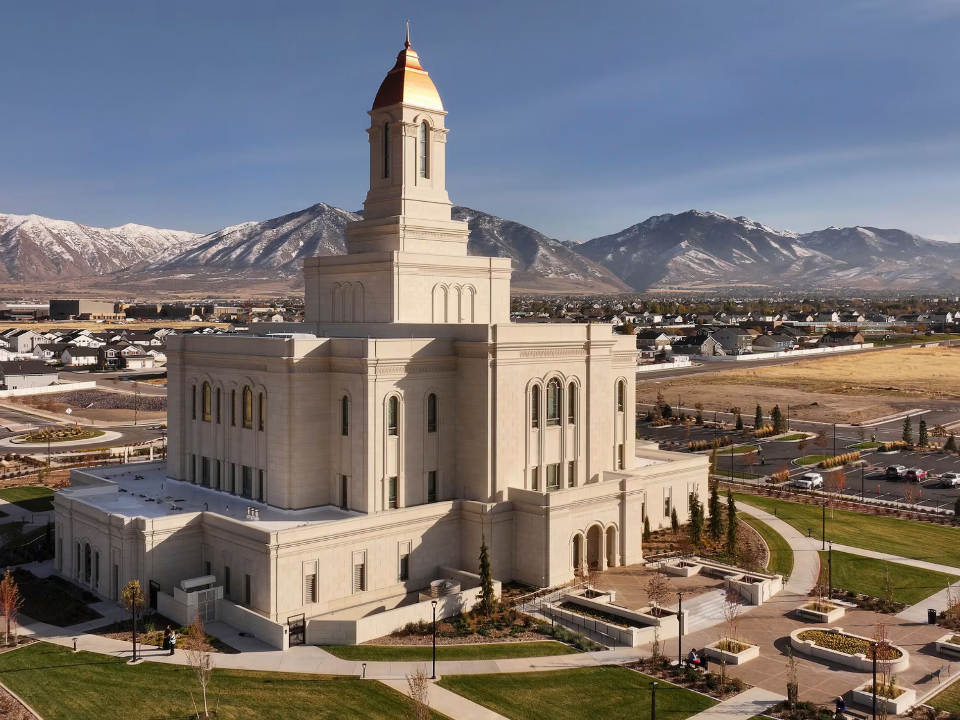
FamilySearch-130th
President Russell M. Nelson of The Church of Jesus Christ of Latter-day Saints dedicated the Church's 200th temple, the Deseret Peak Utah Temple, in Tooele, Utah, on Sunday, November 10, 2024. Photo by Jeffrey D. Allred, courtesy of Church News.Copyright 2024 Deseret News Publishing Company.“We have been in meetings with President Nelson and his counselors where, quite emphatically, they have reminded us there is no purpose to genealogy without temple ordinances. There is nothing we do that does not somehow relate back to the temple,” Elder Hamilton said. “President Nelson’s vision of bringing temples closer and closer to the people has really driven the work of the Family History Department so that we can help nourish the temples with names. That is our ultimate end objective. That is what we do.”
Once President Nelson announces new temples at general conference, Elder Hamilton, Rockwood and others gather to assess FamilySearch resources and needs in the new temple locations.
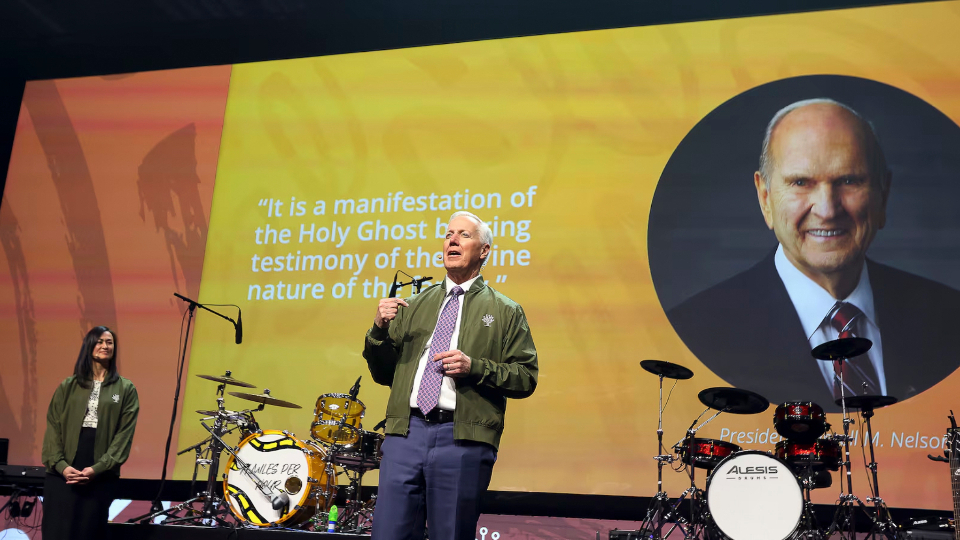
FamilySearch-130th
Sister Kristin M. Yee, Second Counselor in the Relief Society General Presidency, left, listens as Elder Kevin S. Hamilton, a General Authority Seventy and executive director of the Church's Family History Department, speaks at a devotional during the RootsTech after party for young single adults at the Salt Palace Convention Center in Salt Lake City on Friday, March 1, 2024. Photo by Brian Nicholson, courtesy of Church News.Copyright 2024 Deseret News Publishing Company.“Where do we need to find more records? What archives do we need to engage with? How do we support these new temples that have just been announced?” Elder Hamilton said. “Sometimes it is a happy experience. ... We adjust and we scramble and tweak our business plan going forward so that we can address the needs of these newly announced temples.”
Added Rockwood, “If it’s Saratoga Springs, (Utah), we say, ‘We are good to go.’ If he says, ‘Bengaluru, India,’ we have a lot of work to do.”
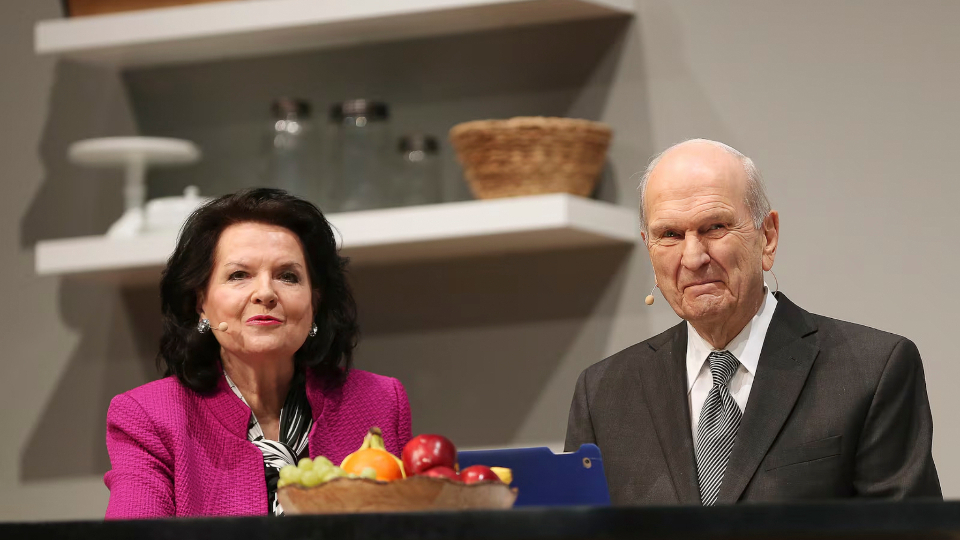
FamilySearch-130th
President Russell M. Nelson and his wife, Sister Wendy Nelson, speak at RootsTech in Salt Lake City on Saturday, February 11, 2017. Photo by Jeffrey D. Allred, courtesy of Church News.Copyright 2024 Deseret News Publishing Company.They encouraged members to continue using Family Name Assist, a new FamilySearch feature accessible from Leader and Clerk Resources that helps bishopric members, branch presidents and others that local leaders designate to assist Church members in setting up a FamilySearch account and gathering information to do proxy baptisms and confirmations in a temple for deceased family members.
Discoveries and Breakthroughs
A few years ago, the First Presidency expressed concern about “records at risk” — records facing possible destruction or, in some indigenous communities, where one member is tasked with memorizing generations of genealogies and no written records exist.
FamilySearch began sending native-speaking contractors with technology into African villages to capture an oral history and then use the information to create records and family trees.

FamilySearch-130th
Left, Matt Heiss of the Church History Department provides training and gathers oral histories in the Democratic Republic of the Congo in this archive photo. Photo provided by Matt Heiss, courtesy of Church News.All rights reserved.Today the FamilySearch has some 4,500 contractors scattered throughout 21 African countries. The 2 millionth interview was completed in October, and hundreds of millions of records will be completed by the end of 2024. Similar projects are underway in the Philippines, Papua New Guinea and among native Americans, Elder Hamilton said.
“This is the first time anybody has ever done anything like this on such a scale,” the Church leader said. “Anywhere we have people that have oral records, we are trying to capture that information, those records, to get them published and accessible so that people can build their family tree.”
It’s a race against time. One “key rememberer” who was 107 years old, recently died.
“When those ‘rememberers’ pass away, that people just lost a library,” Rockwood said. “Just as we are trying to save those records that are deteriorating in bad environmental situations around the world, we are also trying to record oral histories.”
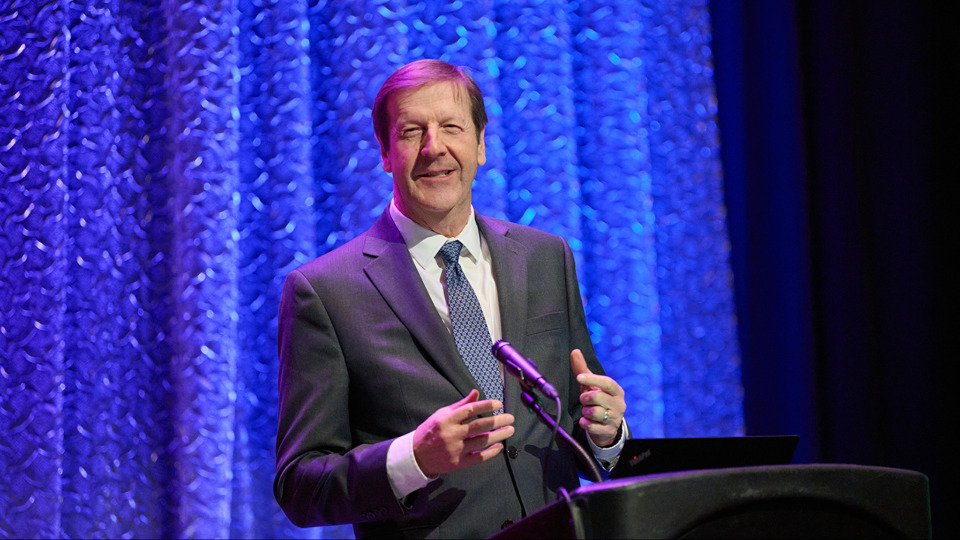
FamilySearch 130th
FamilySearch CEO Steve Rockwood speaks at a RootsTech event at the Salt Palace Convention Center in Salt Lake City on Wednesday, February 28, 2024. 2024 by Intellectual Reserve, Inc. All rights reserved.Another simple yet significant breakthrough came when FamilySearch began requiring all visitors to register for a free account with a user name and password. The move enlarged the FamilySearch family tree and provided additional resources.
Deeply Meaningful Experiences
Elder Hamilton told the story of a prominent clan leader in Taiwan visiting a FamilySearch family history center in Taipei where he discovered that his estranged daughter had created his family tree using FamilySearch. The man was even able to listen to an audio recording left by his daughter, who is now deceased, reconnecting with her in a deeply emotional moment.
“There are hundreds and thousands of those stories where people have these deeply personal, deeply emotional experiences,” Elder Hamilton said. “The Holy Ghost is very powerful and touches people in a way that is heart-turning and heart-softening. We see it happen every day, over and over.”
Amid the huge projects, business and technology of FamilySearch, it’s the intimate, one-on-one experiences that move the work forward. Rockwood told about helping a recently baptized member learn how to take the names of his deceased grandparents to the temple.
“That is the great motivation,” Rockwood said.
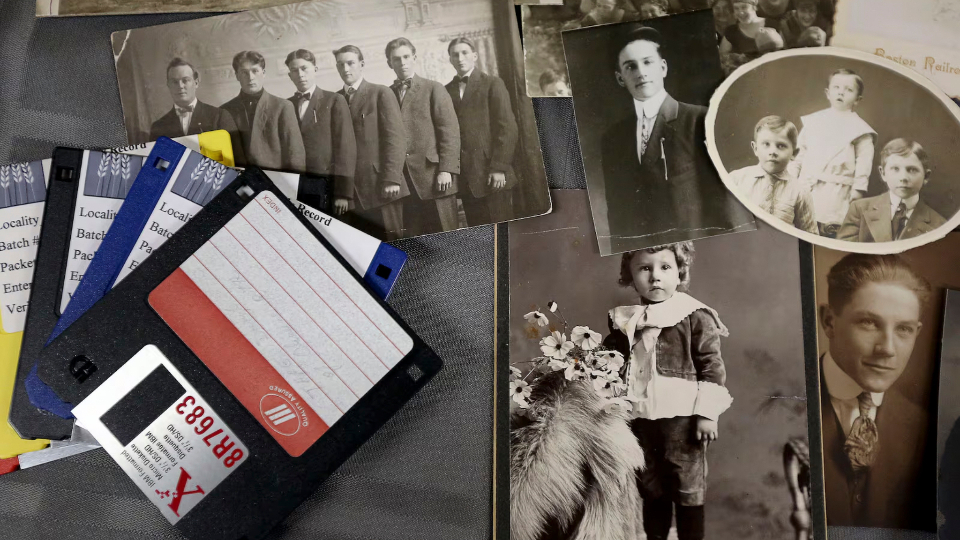
FamilySearch-130th
Display of historical photos and hard disks during the FamilySearch 125th anniversary celebration at the Family History Library in Salt Lake City on Wednesday, November 13, 2019. Photo by Kristin Murphy, courtesy of Church News.Copyright 2024 Deseret News Publishing Company.Building the Family Tree of Humanity
While commemorating the 130th anniversary, Elder Hamilton, Rockwood and others at FamilySearch are also doing their best to look forward and envision where FamilySearch will be in 10 to 20 years. It’s difficult to imagine with the rapid development of technology, but the prospects are exciting, and they are grateful to be engaged in the work with a prophetic vision to “gather all of God’s children.”
“It is one of the most exhilarating things I have ever done in my life, to be involved in this work,” Elder Hamilton said.
Some estimates indicate that as many as 80-100 billion people have lived on the earth or been born since Adam and Eve. What does that mean for FamilySearch?
“We are going to build the family tree of humanity, all of God’s children, accurately placed into a tree, with relationships carefully defined, so that we can go and seal those families together in temples. That is the goal,” he said. “I know it sounds a little audacious, but you know what, the Lord is in charge. He can do anything He wants. We are going to move forward in faith. It is my testimony that we will get there.”
Copyright 2024 Deseret News Publishing Company.
